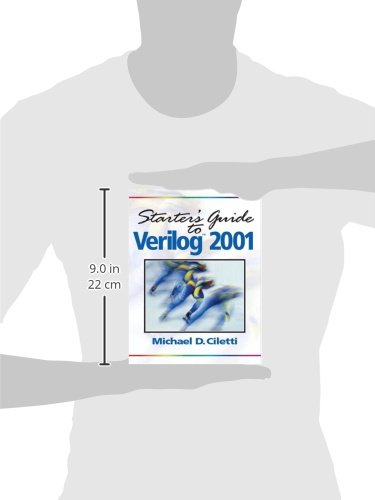Customer Services
Copyright © 2025 Desertcart Holdings Limited
Desert Online General Trading LLC
Dubai, United Arab Emirates



Full description not available
P**S
Not hating it, not loving it either
Well, my bought this book because my class required this one. Got to say, the first 2 chapters were hard to understand. However, in chapter 3-6, it gets better (6 chapters total). It shows clearly the syntax of Verilog code. Getting to know how to write Verilog code you need to have this book. My professor said, this book is clearer and easier to understand compare to his old book (the time that he started to learn Verilog code). Bottom line, if you want to learn how to code using Verilog buy this.
B**B
I love this book very helpful manual to have around
I love this book very helpful manual to have around. It arrived on time. Excellent condition: no tears, no lines, no highlights what so ever. I am very happy about the book.
W**R
Very simple book that covers the bare bones basics. Waste 🗑 of money 💵
Very little content that can't be found free on the internet. I looked through it in a few minutes. Only covers the very basic verilog code.
D**M
What a waste!
Just received my copy. There's no inclusion of the additional commands in file I/O from Verilog 2001. There's no $fscanf, no $fgets. No always @(*) explanation. If you're looking for Verilog 2001 stuff, look elsewhere.
J**N
Excellent introduction and reference
I purchased this with the hope of reinforcing my existing Verilog knowledge as well as familiarizing myself with new language features added in Verilog 2001.What I found in the book was a fairly well-written, concise, introduction to the language. Furthermore, Verilog 2001 features were mentioned as appropriate. The examples are diverse and exhaustive, making this a perfect reference guide for people who learn best by example. Also, appendices provide invaluable reference materials for language features and primitives. Finally, Prof. Ciletti does an excellent job of mentioning practical synthesis considerations in designs, as well as suggesting coding styles as opposed to mandating a specific style.I feel this book is an excellent value for the price, and I've placed in my reference bookshelf for digital design.
T**T
an excellent introduction to verilog
I liken this book to Kernighan and Ritchie's "The C Programming Language" in that it seems very concise, self-contained, well-written, with helpful appendices that will answer most advanced questions about verilog. The comparison is fitting since verilog is based on the C language. The aforementioned book on C is really the only text reference on the subject that I've used in the past five years, and I imagine verilog 2001 will play a similar role as I continue using verilog to design hardware.
Trustpilot
1 month ago
1 month ago